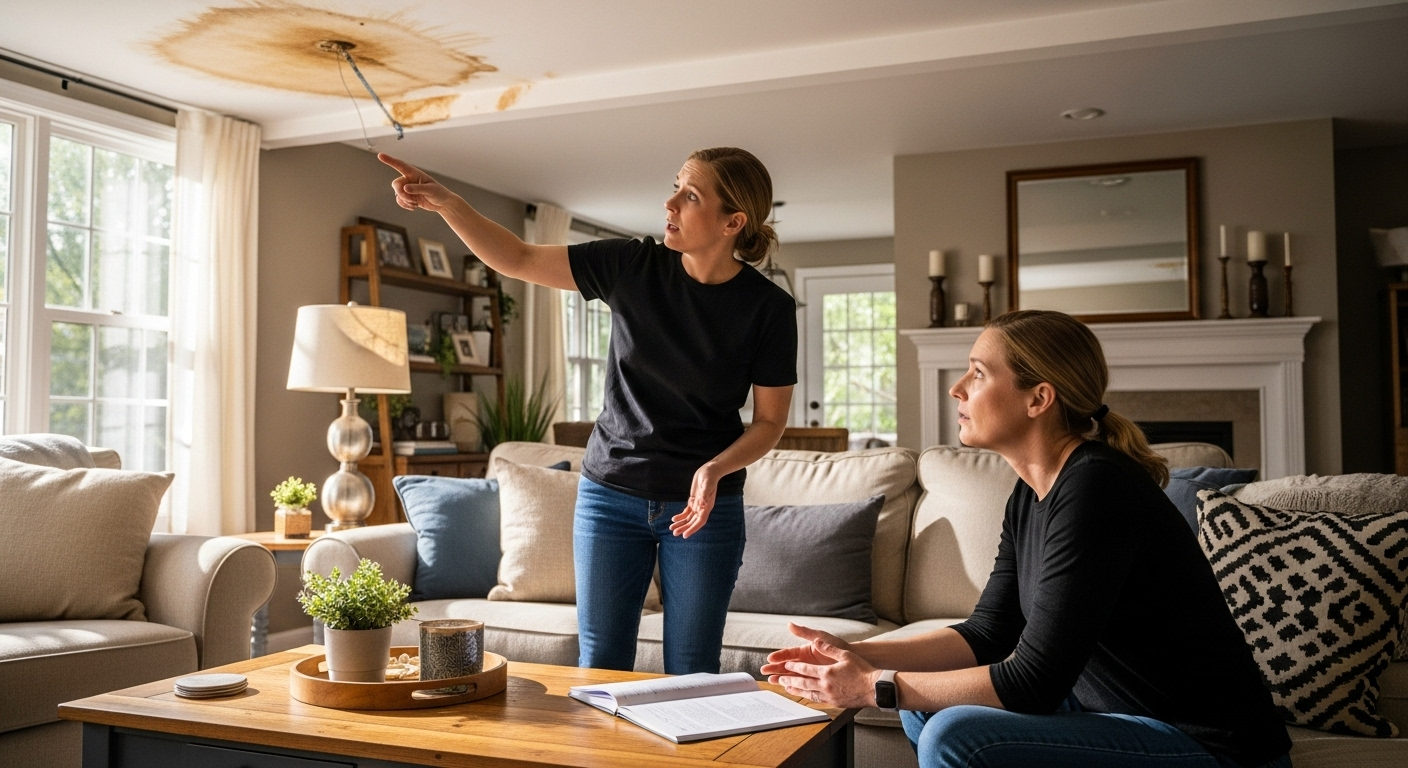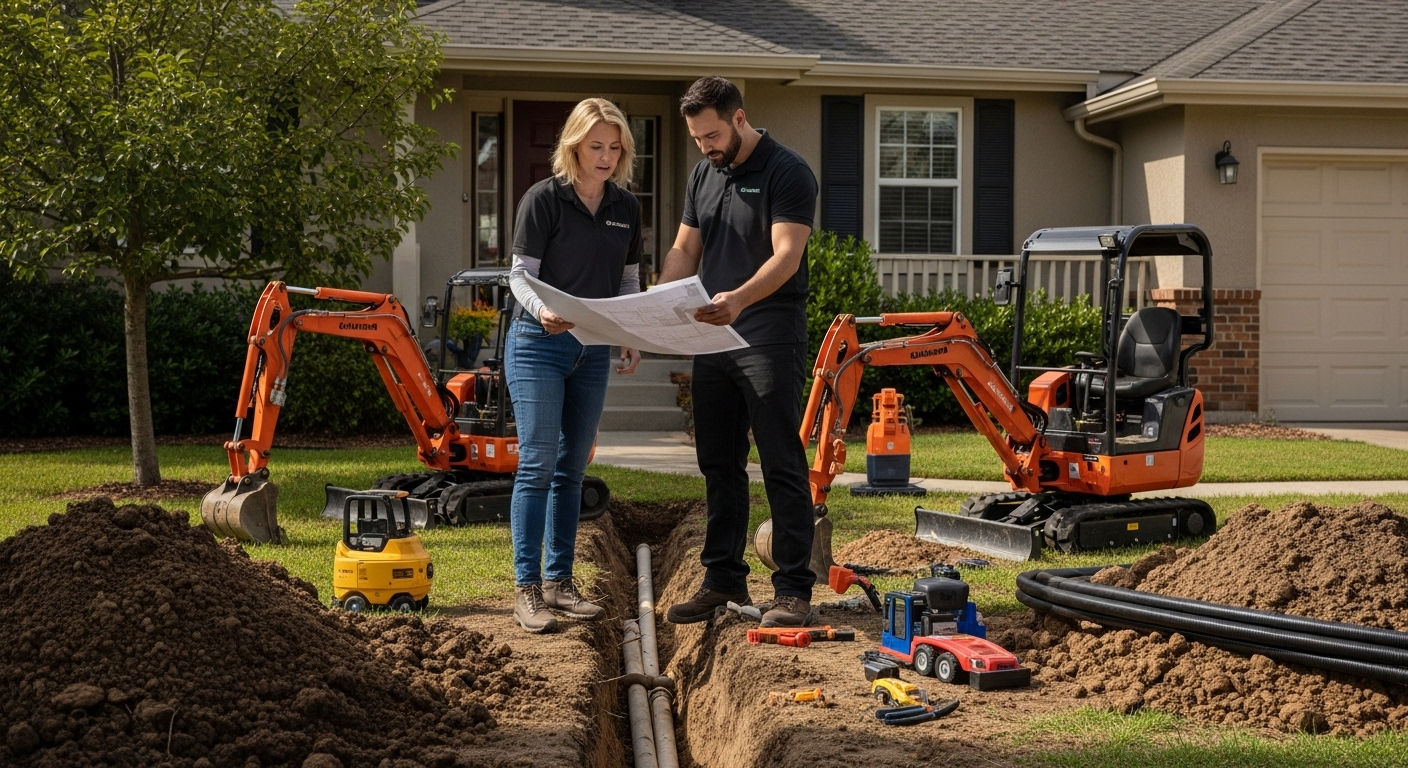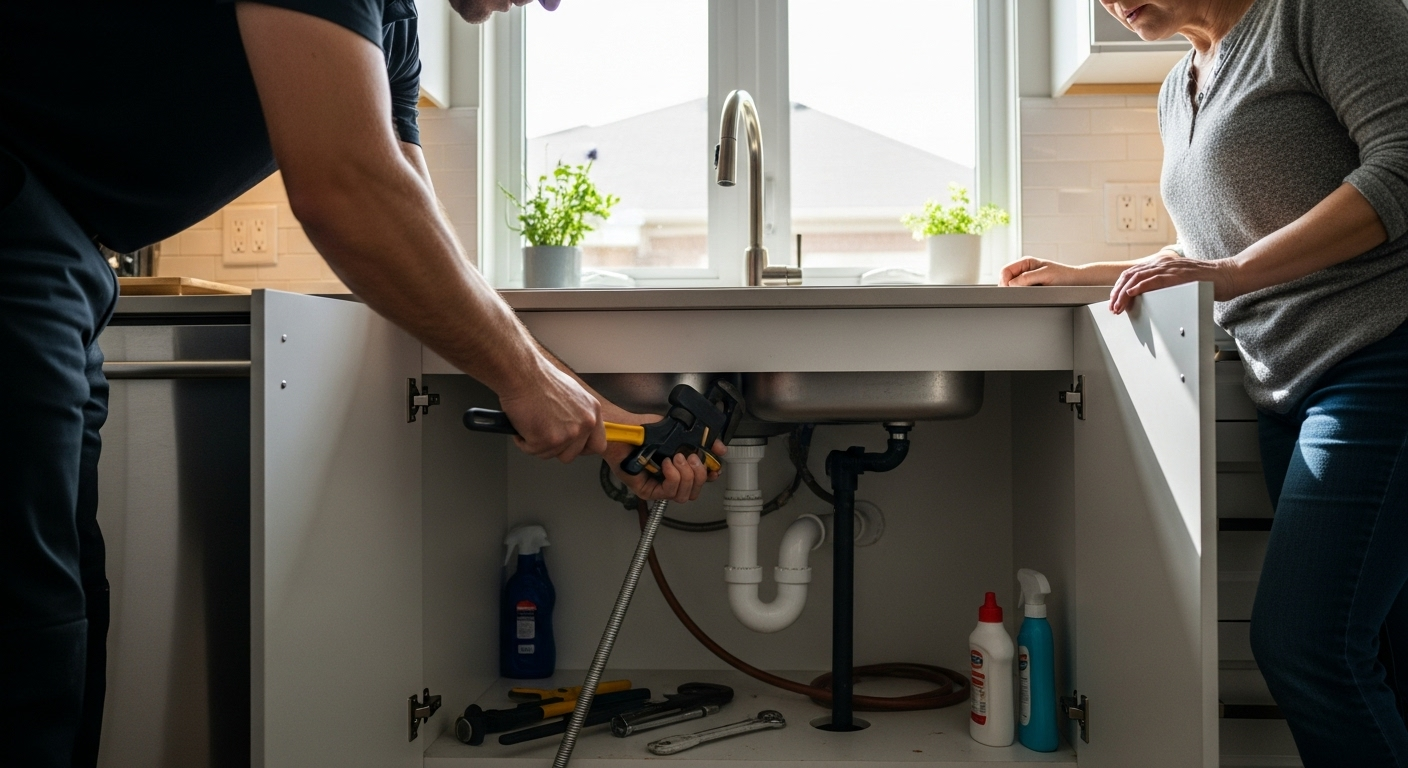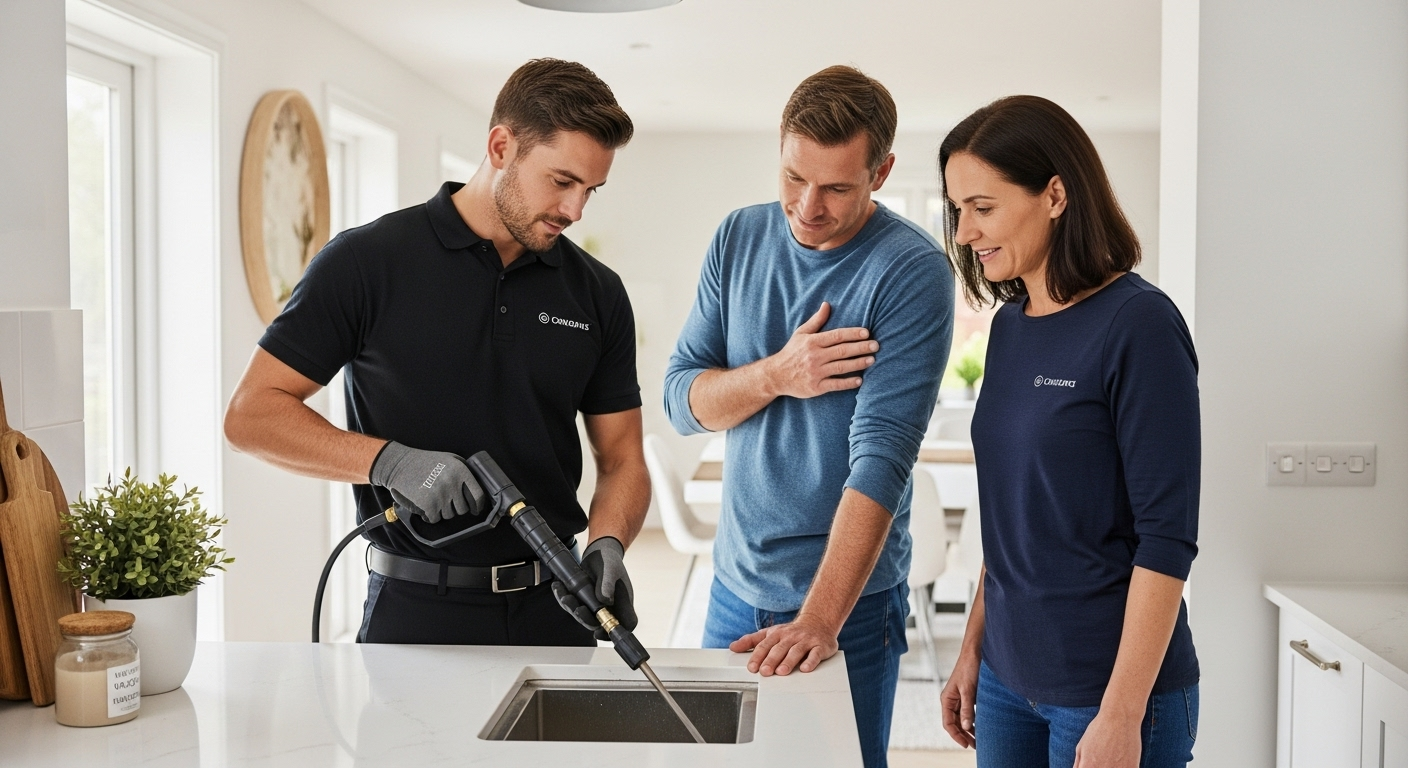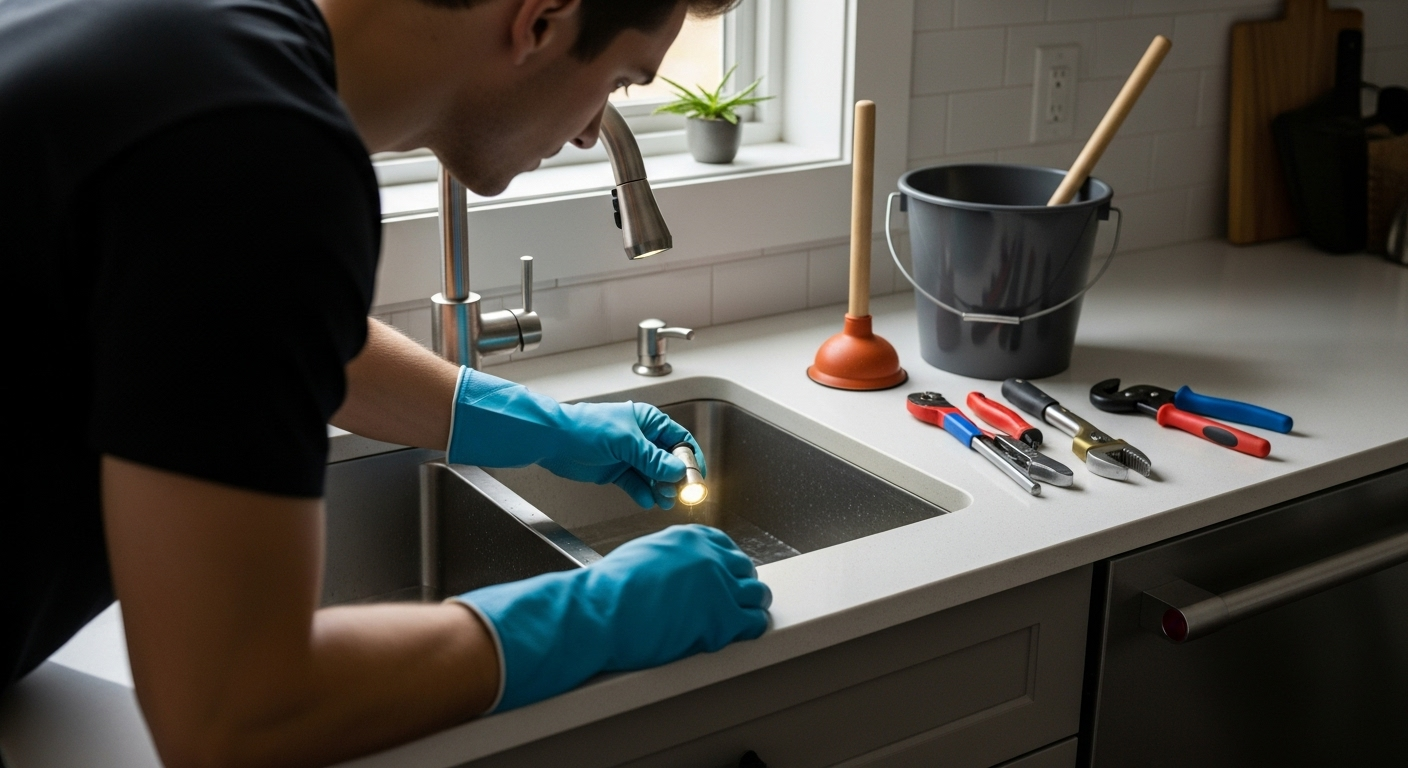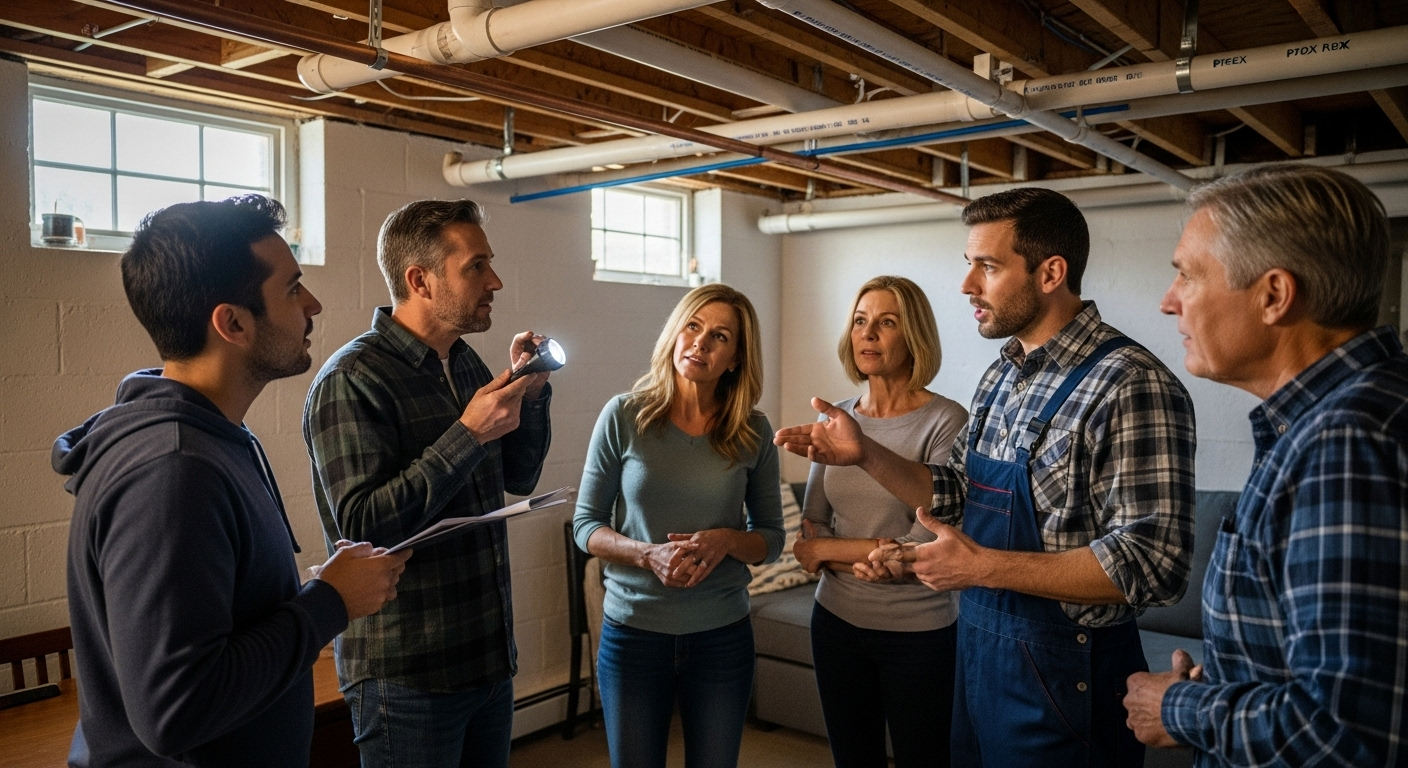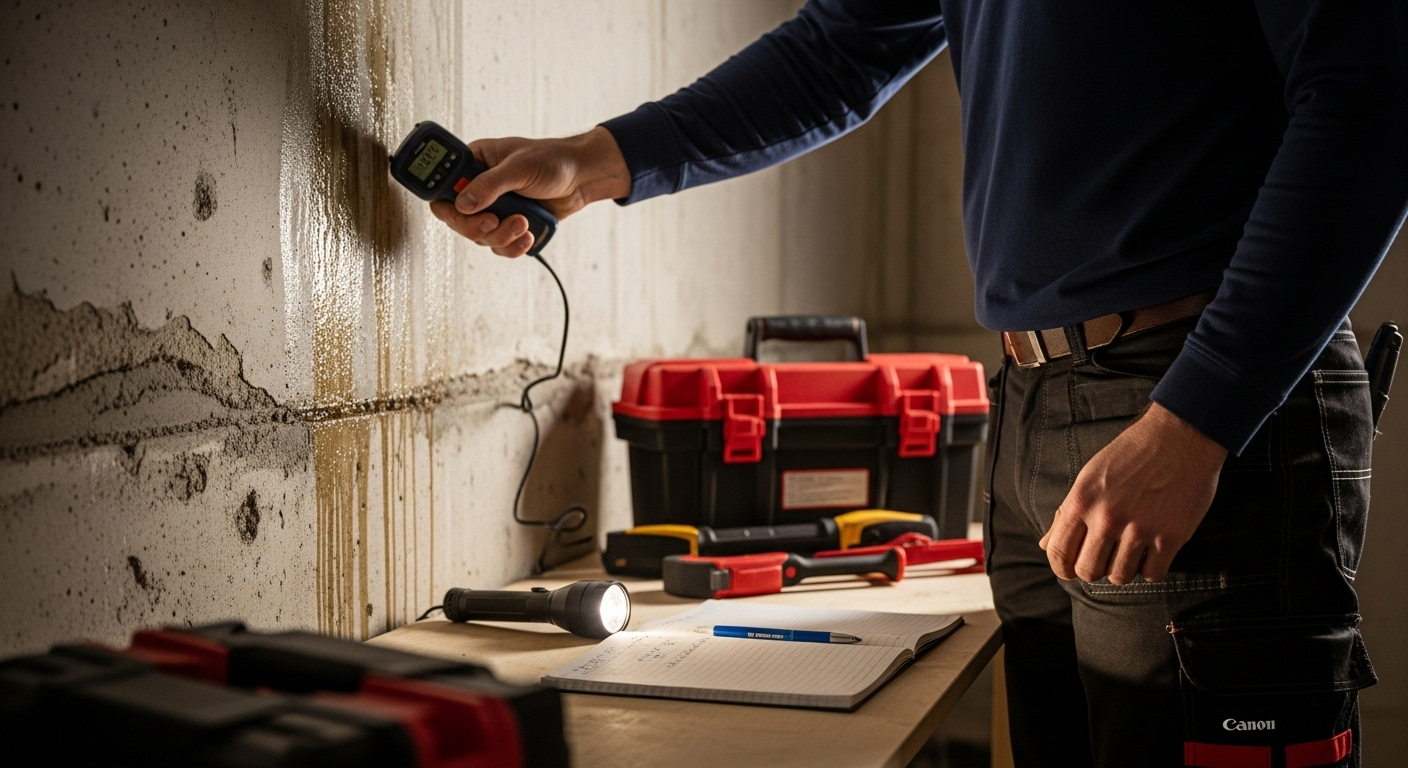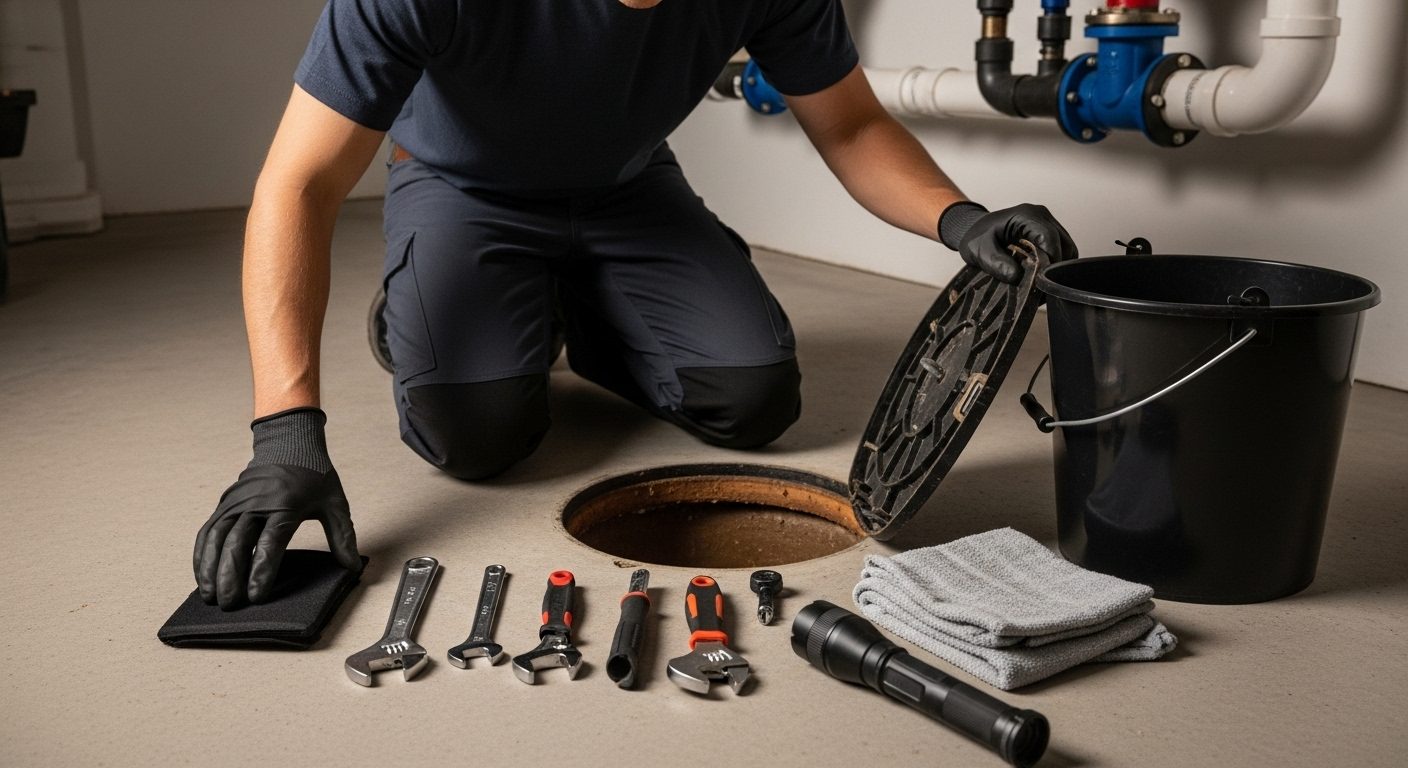What is a Backwater Valve? Understanding Its Importance

Flooded basements and unexpected sewage backups can ruin not only your day but your savings too. Nearly $25,000 in repair bills can hit homeowners after just a single flooding event . Most people think keeping water out is all about sump pumps or sealing cracks. Actually, the real guard against disaster could be a small device hidden in your main sewer line and it’s called a backwater valve.
Table of Contents
Quick Summary
| Takeaway | Explanation |
|---|---|
| Install backwater valves to prevent sewage backups | These valves act as barriers, blocking contaminated water from entering your home during extreme weather events. |
| Understand the financial benefits of backwater valves | They can save homeowners thousands in repair costs and potentially lower insurance premiums. |
| Proper installation is crucial for effectiveness | Professional evaluation ensures optimal placement and operation of the backwater valve in your plumbing system. |
| Backwater valves protect against health risks | They stop harmful bacteria and pathogens from entering your living space, preserving your family’s health. |
| Be aware of high-risk areas in your region | Homes in low-lying areas or near old municipal systems are particularly vulnerable to sewer backups. |
Defining Backwater Valves: What Are They?
A backwater valve is a critical plumbing device designed to prevent sewage and wastewater from flowing backward into your home during extreme weather events or municipal sewer system overloads. This ingenious mechanism acts as a protective barrier, stopping potential basement flooding and protecting your property from significant water damage.
The Core Function of Backwater Valves
At its most fundamental level, a backwater valve operates like a one-way gate for your home’s drainage system. When water attempts to flow in the wrong direction — typically from the municipal sewer line back into your property — the valve automatically closes, creating a seal that blocks sewage and wastewater from entering your home.
Key Characteristics of Backwater Valves:
- Installed directly on the main sewer line
- Designed to open and close automatically
- Made from durable materials like heavy-duty plastic or metal
- Can be manually or automatically operated
Why Backwater Valves Matter for Homeowners
In urban areas with complex drainage systems, heavy rainfall or snowmelt can overwhelm municipal sewers. When this happens, pressure builds up in the sewer lines, potentially forcing contaminated water back into residential properties. A backwater valve prevents this scenario by creating a critical point of protection.
Homeowners in regions with aging infrastructure or prone to flooding will find backwater valves especially valuable. They serve as a crucial line of defense against water damage, potential health hazards from sewage backup, and expensive cleanup and restoration costs.
By understanding what a backwater valve is and how it functions, homeowners can take proactive steps to protect their property and ensure the safety of their living environment.
The following table summarizes the essential structural components and material qualities that make backwater valves effective at protecting residential properties.
| Component or Feature | Description |
|---|---|
| Hinged flap mechanism | Acts as a one-way gate, allowing normal wastewater flow and blocking reverse flow. |
| Robust sealing gasket | Forms a tight seal to prevent sewage and contaminated water from entering. |
| Pressure-sensitive trigger | Detects backflow conditions and activates flap closure. |
| Corrosion-resistant housing | Ensures long-term durability even in harsh plumbing environments. |
| Self-cleaning internal surfaces | Minimizes the risk of blockages and maintains valve performance. |
| High-grade plastic or metal | Used for construction, providing strength and resistance to chemicals. |
| Adaptability to temperature | Materials withstand fluctuations in temperature and environmental stress. |
The Importance of Backwater Valves for Homeowners
Backwater valves are not just another plumbing component they are a critical safeguard for your home’s structural integrity and your family’s health.
This table highlights the typical financial risks homeowners face without a backwater valve, reinforcing the device’s importance in minimizing potential losses.
| Financial Risk | Details |
|---|---|
| Repair costs | Ranges from $5,000 to $25,000 after a single incident |
| Structural damage | May require replacement of flooring and walls |
| Loss of personal items | Irreplaceable belongings can be destroyed |
| Increased insurance premiums | Multiple claims may cause premiums to rise |
| Long-term property value impact | Unaddressed damage can lead to reduced home value |
| Understanding their significance can help homeowners prevent costly damage and protect their most valuable asset. |
Financial Protection Against Water Damage
Water damage from sewer backups can result in devastating financial consequences. A single basement flooding incident can cost homeowners thousands of dollars in repairs, including structural damage, mould remediation, and replacement of personal belongings.
 Backwater valves provide an essential line of defense
, potentially saving homeowners significant expenses in the long run.
Backwater valves provide an essential line of defense
, potentially saving homeowners significant expenses in the long run.
Financial Risks Without a Backwater Valve:
- Potential repair costs ranging from $5,000 to $25,000
- Risk of permanent damage to flooring and walls
- Potential loss of irreplaceable personal items
- Increased insurance premiums after multiple claims
Health and Sanitation Concerns
Sewer backups are more than just a structural problem they pose serious health risks. When contaminated water enters your home, it brings harmful bacteria, viruses, and potential pathogens that can cause significant health issues. Backwater valves prevent these dangerous substances from entering your living space, protecting your family from potential waterborne illnesses.
Comprehensive Property Protection
Beyond financial and health considerations, backwater valves offer comprehensive protection for your entire property. They work silently and effectively, creating a reliable barrier against unexpected sewer system challenges. This is particularly crucial in areas with aging municipal infrastructure or regions prone to heavy rainfall and flooding.
By installing a backwater valve, homeowners demonstrate proactive maintenance and a commitment to preserving their property’s value and their family’s well-being. The small investment in this crucial plumbing device can prevent substantial long-term damage and provide peace of mind during unpredictable weather events.
How Backwater Valves Function to Protect Your Home
Backwater valves are sophisticated yet simple mechanical devices engineered to provide an essential protective barrier for residential plumbing systems. By understanding their intricate design and operational mechanism, homeowners can appreciate how these small components prevent potentially catastrophic water damage.
The Mechanical Design of Backwater Valves
At the heart of a backwater valve is a strategic one-way flap mechanism that allows normal wastewater flow while preventing reverse water movement. When water attempts to flow backward into your home , the flap automatically closes, creating a tight seal that stops sewage and contaminated water from entering your living space.
Key Mechanical Components:
- Hinged flap or disc mechanism
- Tension springs for automatic closure
- Durable sealing materials
- Corrosion-resistant construction
Sensing and Response Mechanism
Backwater valves operate through a remarkably intelligent design that responds to water pressure changes. As municipal sewer lines experience increased pressure during heavy rainfall or flooding, the valve’s internal mechanism detects this reversal and triggers an immediate closure. This split-second response prevents contaminated water from backing up into your basement or lower-level plumbing fixtures.
Installation and Strategic Placement
Professional installation is crucial for optimal backwater valve performance. These devices are typically installed at the point where your home’s main sewer line connects to the municipal sewer system. By positioning the valve at this critical junction, it can intercept and block potential backflow before it enters your home’s internal plumbing network.
The strategic placement ensures that even during extreme weather events or infrastructure challenges, your home remains protected from potentially devastating sewer backups. Homeowners can rest assured that their backwater valve stands as a silent guardian, ready to activate and prevent water damage at a moment’s notice.
Key Concepts and Components of Backwater Valves
Backwater valves represent a sophisticated plumbing technology designed to protect residential properties from potentially devastating sewage backflow. Understanding their core components and underlying principles helps homeowners appreciate the complexity of these critical protective devices.
Fundamental Structural Elements
The anatomy of a backwater valve involves several precision-engineered components working in seamless coordination. The primary mechanism is a strategically designed flap or gate that responds to water pressure dynamics, allowing normal wastewater flow while preventing reverse contamination.
Essential Structural Components:
- Hinged flap mechanism
- Robust sealing gasket
- Pressure-sensitive trigger system
- Corrosion-resistant external housing
- Self-cleaning internal surfaces
Material Science and Engineering
Modern backwater valves are constructed using advanced materials selected for durability, resilience, and long-term performance. High-grade plastics like polyvinyl chloride (PVC) and specialized polymers provide excellent resistance to chemical degradation, temperature fluctuations, and mechanical stress.
Performance Criteria for Valve Materials:
- Ability to withstand significant water pressure
- Resistance to bacterial growth
- Minimal friction during valve operation
- Adaptability to temperature variations
- Long-term structural integrity
Operational Principles and Fail-Safe Mechanisms
Backwater valves function through an ingenious design that prioritizes home protection. When municipal sewer systems experience elevated pressure or potential backflow conditions, the valve’s internal mechanism automatically activates. The flap closes instantaneously, creating a secure barrier that prevents contaminated water from entering residential plumbing systems.
These devices incorporate sophisticated fail-safe mechanisms that ensure reliable performance even under extreme conditions. Homeowners can trust that their backwater valve will respond quickly and effectively, providing a critical line of defense against potential water damage and health hazards.
Real-World Applications and Considerations for Homeowners
Backwater valves are not theoretical devices but practical solutions addressing real challenges faced by homeowners in urban and suburban environments. Understanding their applications can help residents make informed decisions about protecting their property from potential water damage.
Municipal Infrastructure and Flood Risk
Urban areas with aging sewer systems are particularly vulnerable to backup events during heavy rainfall or snowmelt. Backwater valves become critical infrastructure protection tools in regions experiencing increasing extreme weather patterns. Municipalities across Canada have recognized these challenges, with many implementing programs to encourage residential backwater valve installations.
High-Risk Environmental Scenarios:
- Areas with combined sewer systems
- Regions experiencing frequent flooding
- Neighborhoods with older underground infrastructure
- Low-lying residential districts
- Communities near major waterways
Insurance and Financial Considerations
Many home insurance providers now view backwater valve installation as a proactive risk management strategy. Homeowners who invest in these protective devices may qualify for insurance premium reductions and demonstrate responsible property maintenance. The potential savings from preventing a single flooding incident can far outweigh the initial installation costs.
Financial Benefits of Backwater Valve Installation:
- Potential insurance premium discounts
- Reduced risk of expensive water damage repairs
- Increased property value
- Lower long-term maintenance costs
- Improved home insurability
Professional Assessment and Installation
While backwater valves offer significant protection, professional assessment remains crucial. Experienced plumbing professionals can evaluate your specific property characteristics, including soil conditions, municipal sewer connection details, and potential flood risks. They can recommend the most appropriate valve type and ensure proper installation to maximize effectiveness.
Homeowners should view backwater valves as an essential investment in property protection.
 By understanding their real-world applications and working with qualified professionals, residents can significantly mitigate the risks associated with sewer backups and unexpected water intrusion.
By understanding their real-world applications and working with qualified professionals, residents can significantly mitigate the risks associated with sewer backups and unexpected water intrusion.
Protect Your Home from Sewer Backups with Expert Backwater Valve Solutions
If you have learned about the risk of basement flooding and sewage backup in the article above, you know how unsettling water damage can be. The threat of contaminated water entering your home is real in Toronto, especially during heavy rainfall or sudden sewer line pressure changes. Whether you have experienced a close call or want to prevent costly repairs and dangerous health hazards, you deserve a proactive defence – not just another temporary fix.
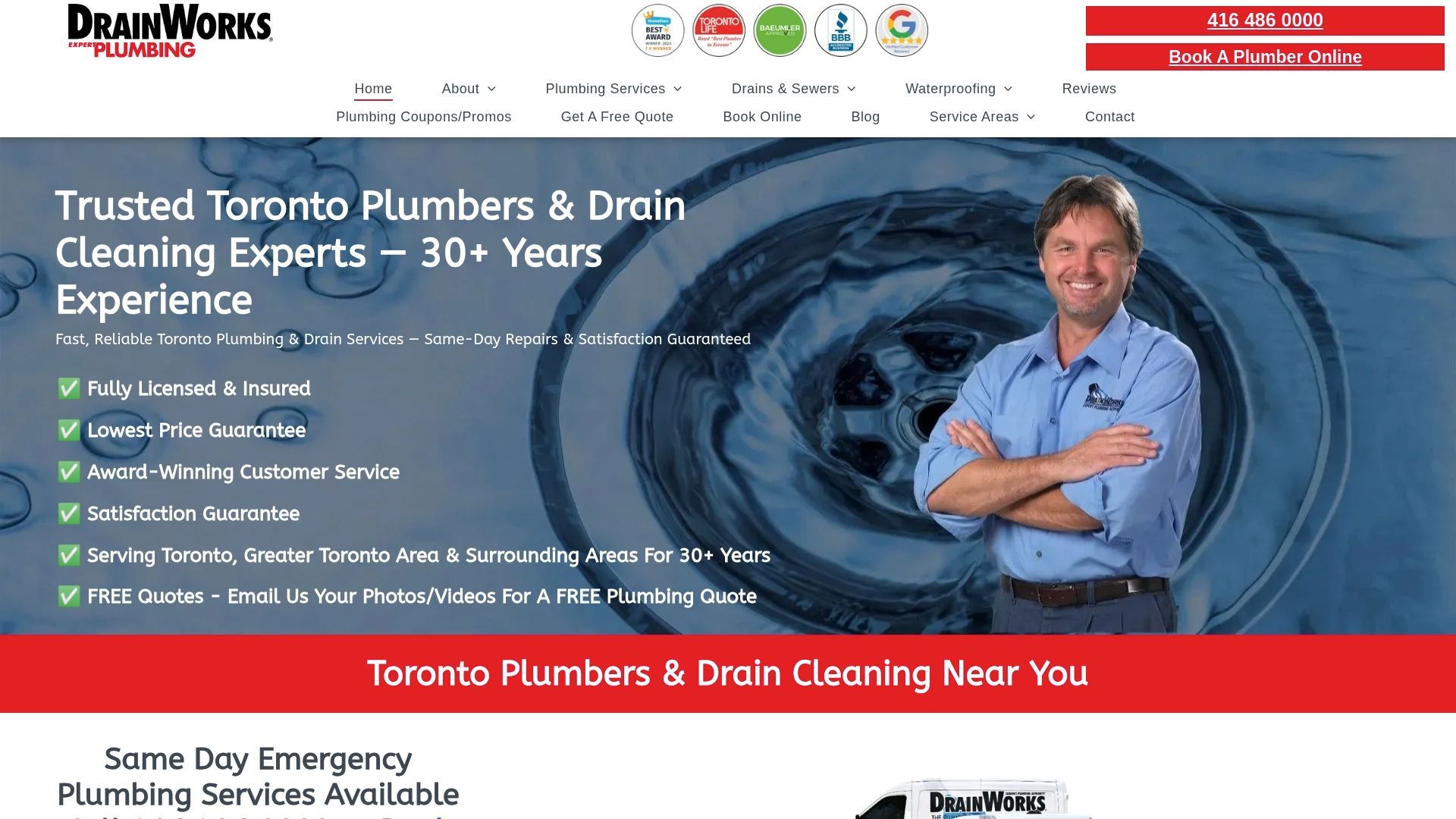
For over 30 years, DrainWorks Plumbing has helped Toronto homeowners safeguard their properties with professional backwater valve installation and service. Our licensed, insured team understands the precise mechanics described in the article and installs every valve for maximum protection against backflow. Do not wait for the next storm to put your home at risk. Visit our homepage to book your same day appointment or learn more about our award-winning plumbing solutions. Your property deserves peace of mind and our experts are ready to help you achieve it now.
Frequently Asked Questions
What is a backwater valve and how does it work?
A backwater valve is a plumbing device that prevents sewage and wastewater from flowing backward into your home. It operates like a one-way gate, closing automatically when reverse water flow is detected, thus protecting your property from potential flooding and contamination.
Why are backwater valves important for homeowners?
Backwater valves are essential for homeowners as they protect against sewer backups, which can cause significant water damage, health hazards from contaminated water, and costly repairs. They serve as a crucial defense, especially in urban areas with aging sewer systems or regions prone to flooding.
How can installing a backwater valve save me money?
Installing a backwater valve can save you money by preventing expensive water damage repairs, which can range from $5,000 to $25,000. Additionally, some insurance providers offer discounts on premiums for homes with backwater valves, further reducing financial risk.
What factors should I consider before installing a backwater valve?
Before installing a backwater valve, consider factors like your home’s plumbing layout, local sewer system conditions, flood risk, and whether professional installation is necessary. Consulting with a plumbing expert can help determine the best type and placement for optimal protection.



